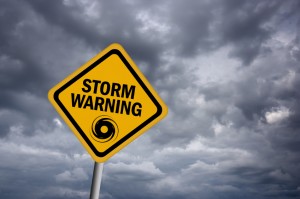After 22 hurricane-free years, the state of Hawaii is bracing itself for two oncoming hurricanes that have already grounded flights and restricted access to popular tourist destinations while threatening floods, landslides and blackouts.
Hurricane Iselle is expected to hit the series of islands this Thursday before weakening to a strong tropical storm. It has weakened to 80 miles per hour from 85 mph as it neared the Big Island of Hawaii, where it is expected to go ashore late evening.
If Iselle maintains its strength, it will be the first hurricane to hit Hawaii’s islands since Hurricane Iniki in 1992, according to The Weather Channel.
The U.S. National Hurricane Center in Miami has rated Iselle as a Category 1 storm on the five-step Saffir-Simpson scale. As of 5 a.m. local time, Iselle was 305 miles east-southeast of Hilo located on the Big Island, according to the U.S. Central Pacific Hurricane Center.
“Not a major hurricane, but definitely enough to blow things around,” National Weather Service meteorologist Mike Cantin told the AP
Due to Hawaii’s rough terrain, the hurricane will most likely weaken by the time it moves on to the other smaller island within the state, late Thursday night and Friday morning.
“The volcanoes on the Big Island will do a number on the system,” said Cantin.
Tropical storm warnings have been issued for Maui Country, which includes the islands of Maui, Lanai, Kahoolawe and Molokai; the island of Oahu, which includes Honolulu; and Kauai country which includes the islands of Kauai and Niihau.
The only area that is under a hurricane warning is the big island of Hawaii, which has a population of over 185,000 permanent residents. However, during this time of year, the whole state of Hawaii is flocked with tourists from all around the world who are now exposed to this severe weather.
Farther to the east, Hurricane Julio has picked up speed, with top winds reaching 105 mph, making it a Category 2 storm. Currently it is 1,235 miles east of Hilo and following Iselle’s path towards the Big Island.
Julio may drift north and miss the islands over the weekend, according to hurricane center track forecasts. It appears to be curving to the north while losing some of its strength.
Gov. Neil Abercrombie, D-Hawaii, signed an emergency proclamation to permit officials to use a disaster fund created by the state government.
“We want to make sure we are doing everything possible to protect the public,” said Abercrombie in a press release. “This proclamation improves the state’s ability to respond quickly to any potential impacts from both storms.”
The hurricanes have dismantled many tourists’ plans, with vacationers seeking to change their flights.
Island Air, a Hawaii inter-island commuter airline, accounted that Thursday afternoon flights in Maui and Lanai has been canceled. On Friday, it will not be serving any of the islands, the AP reported.
With tourism at its height, Hawaiian officials are closing down typical tourist attraction in preparation of the two hurricanes. Hawai’i Volcanoes visitor center and museum was closed today.
Backcountry areas and roads in the area have also been shut in the park that receives about 1.6 million tourists per year. The State’s Division of Forestry and Wildlife shut its hiking trails, wildlife sanctuaries and reserves on the Big Island and Maui.
In the event of a hurricane, the Federal Emergency Management Agency (FEMA) provides valuable safety tips and resources on their website. Detailed information about what you should do before, during, and after a hurricane can be found here.
While preparing an emergency kit and conducting a family communication plan are vital steps, it is also advisable to review one’s homeowners and life insurance policies to make sure everything is up-to-date.
In addition to life and homeowners insurance, it is also recommended that individuals consider taking out a flood insurance protection plan, especially those who live in coastal and inland areas.













